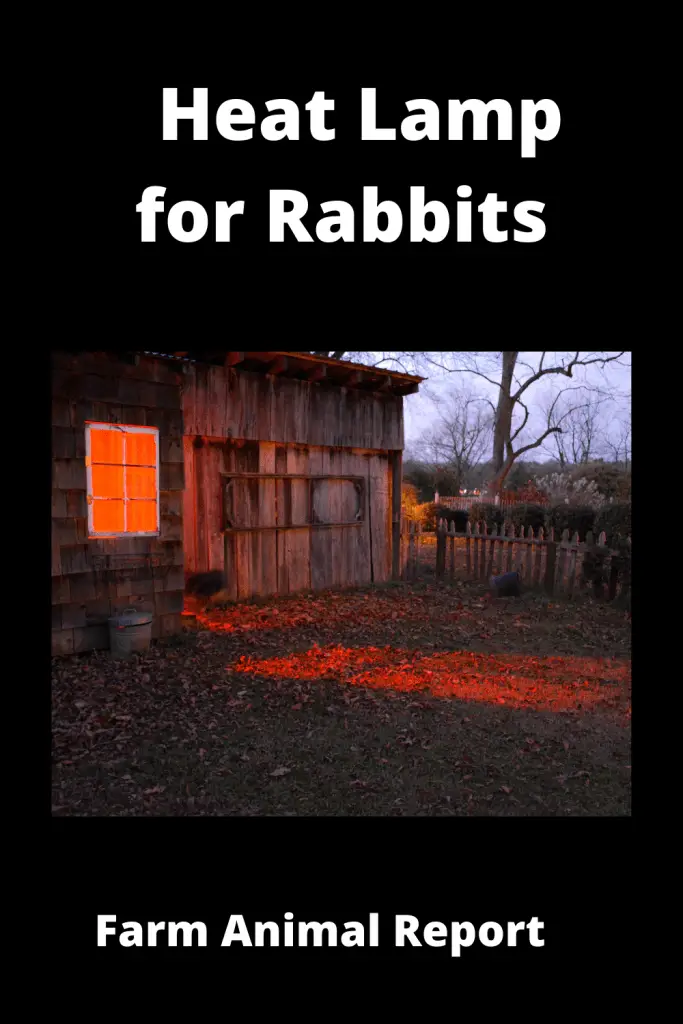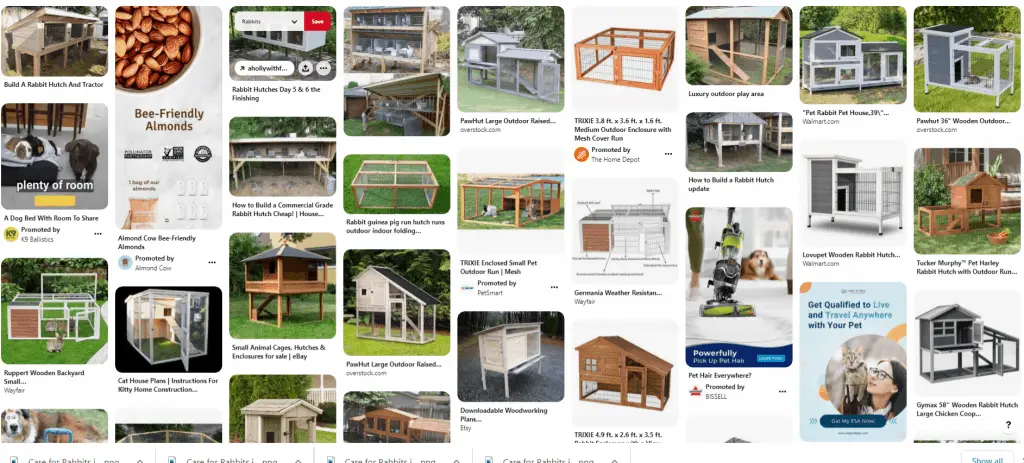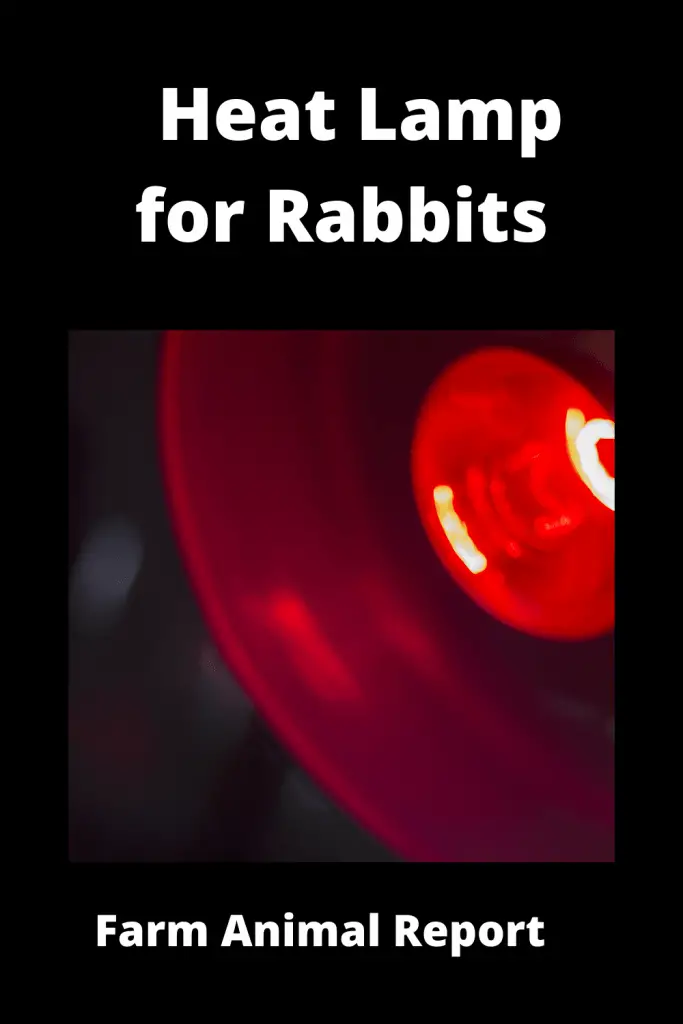Heat Lamp for Rabbits – As general rule rabbits do not need heat lamps unless exposed to severe conditions 1) Extreme chill factors 2) Damp Conditions 3) Very young rabbits 4) Rabbits for some reason have lost the doe. Young Rabbits and Senior rabbits are also prone to heat loss. Smaller Breeds are also susceptible because of their smaller body mass. Heat Lamps, Environmental Heating, and heating pads can all add supplemental heat.
Heat Lamp for Rabbits
Heat Lamp for Rabbits. Harsh, Cold, Windy, Drafty, Damp, Weather Conditions can be fatal to Rabbits. Older Rabbits and the Very Young are the most susceptible.
Heat Lamp for Rabbits / Severe Weather
The environmental conditions, especially those related to temperature, play a crucial role in the survival of all warm-blooded animals.
Check Out Amazon for Resources about Breeding Rabbits
Heat Lamp for Rabbits – Different species of animals evolved different abilities to survive one extreme or the other on the temperature scale on the condition that appropriate water, food, and shelter sources are available. However, there are always optimum choices in which animals will flourish and reproduce best.

Winter is always a difficult time for all the animals, including rabbits. Rabbits can handle cold temperatures reasonably well as long as they have a clean, dry, warm shelter.
You can also Read our Guide –18 Ways to Make Money by Rabbit Farming—Extensive Guidelines for Rabbit Farmers
Wild / Domestic Rabbits
The wild rabbits remain warm during the winter season because they are below the ground. Rabbits can cope with the cold season by adapting according to the weather surrounding them.
Rabbits can cope with the winter season as compared to the hot weather. However, giving the wrong condition to rabbits, chances of frostbite may increase. Rabbits are susceptible to hypothermia if their body temperature falls too low.
Senior / The Young
This increased susceptibility to hypothermia is especially true for the young bunnies, which lack the bulk of the adults.
These young ones can die quickly when the temperature drops and they get exposed to the lower temperature of winter. Smaller breeds of rabbits are more prone to death during the cold season as compared to the more substantial kinds because small breeds don’t have the body mass to retain the heat.

If the rabbits are living outside, then it is essential to prepare some accommodation during the winter season. A hutch is the best option to protect the rabbits during the cold climate.
Unlike wild rabbits, it is not possible to keep the cage of rabbits underground during the cold season. Therefore, special precautionary measures are useful to make the rabbits survive in the winter season.
It is always advisable to keep the rabbits inside, or at least into the garage or shed when the temperature falls below 10-15 degrees Fahrenheit. By providing proper care, the owner can make sure that the rabbits remain healthy through the cold weather. There are several methods to keep the rabbit warm during the harsh winter season.

Methods to Keep Your Rabbits Warm
Rabbit’s average body temperature ranges between 101.5 – 103 degrees. If the temperature falls below 100 degrees Celsius, then the rabbits will become sick.
Ideally, rabbits must have supplemental heat, move them inside the shelter, or follow other precautions to make them feel warm anytime when the temperature drops below 32 degrees.
However, it is always essential to evade overheating for the rabbits, which become sick and stressed at temperatures above 85 degrees.
Heat Lamps, Bulbs, and Monitoring Equipment
Heat lamps are essential for rabbits as they keep rabbits warm. As it is crucial to provide heat to rabbits, especially during the nights, opt for a red light bulb or ceramic heat emitter. This heat emitter will not produce any visible light to prevent any stress to the rabbit with a particular photoperiod.
Add the use of an indoor and outdoor thermometer to monitor the temperature in the habitat. A thermostat with a turning light on and off will help to maintain a relatively consistent temperature.
The owners can place the lamps around the rabbit’s cages in the following steps:
STEP 1 – Heating Pad – Inside Hutch
It is better to place heating pads inside the hutch. There are several types of heating pads available in the market used to keep a comfortable temperature for the rabbits. If the rabbits are in cages, then there are plug-in pads available.
These pads after wrapped in a towel or blanket and place underneath the enclosure. However, do check for such pads regularly to make sure that rabbits don’t have direct access to these pads. These pads can cause fire and electrocution hazards if the Rabbits are able to chew them.
STEP 2 – Heat Lamp – Outside Cage – Heat Lamp Bulb
Another way is to install the heating lamps either outside the cage or cover them with wires so that the rabbits cannot touch them. A regular checkup is required frequently seeing for any burned-out bulbs.
Avoid placing these lamps close to or shining directly on the wood, as these lamps can pose fire. Make sure the rabbits don’t have access to these heat lamps. Keep these heat lamps out of contact with water, including rain and snow.
- Buy Quality Heat Lamp
- Secure Out of Rabbit Reach
- Protect from Chewing the Cord
- GFI Circuit for Protection
- Secure the Heat Lamp Well
- Monitor Temp / Provide space where the Rabbit can move away from Heat
- Best if Lamp can be Temp Regulated / Shut off it Temps Rise
- Buy Proper Quality Bulbs
STEP 3 – Seal Off Drafts
Do cover the windows of the hutch with wood, plexiglass, or Styrofoam with small, several-inch gaps to allow the entrance of air and light in the cages.

STEP 4 – Hutch Blanket
Place an old useless carpet or blanket over the hutch and cover it with a cloth to defend against the elements. They also make Hutch Covers you can buy to help Insulate Your Hutches in Severe Weather
STEP 5 – Raise the Hutch
Try to raise the hutch above the ground level to keep them dry. If the cage has no legs, then place bricks under each corner of the pen to make them a few inches above the ground. This will help retain the heat you are giving to the Rabbits
STEP 6 – Move Hutch out of the Wind
Place the hutch such that the face of the entrances is away from the directions of the cold wind. If it is not promising to do so, then place something in the front of the hutch as a wind barrier.
STEP 7 – Seal any Obvious Cracks
Search for moist pieces of wood where there may be destruction or leaks. Repair leaks with roof sealant.
STEP 8 – Insulating Hutch
Insulate the hutch by positioning a layer of polystyrene enclosed with plywood on the inner side of the pen or line the cage with cardboard, a broadsheet, and heaps of hay or straw.
STEP 9 – Garage Location
Move the pen into a garage or shed for more, making them warm, but not to the car garage, as the fumes can be a health hazard for rabbits. Consumption of a greenhouse heater to increase the temperature is ideal.
Create a Thermal Gradient
A thermal gradient will help to avoid overheating the rabbits. The thermal gradient will make one side of the hutch warm while keeping the other side of the enclosure relatively calm.
This difference in temperature will enable rabbits to move around in the cage as and when necessary to adjust their body temperature.
These thermal gradients are easy to get by merely keeping the heat lamp over one corner of the habitat. The other side gives the Rabbit the opportunity to move closer to the Heat or farther away which is ever he likes.
Fire and Heat Lamp safety
It is very imperative to take special care while using heat lamps near the rabbit’s hutch to prohibit any incidence of fire. The substrates of paper and straw are highly flammable as they catch fire quickly. Try to securely attach the heat lamps securely above the cages to make sure that lights don’t fall.
It is better to keep the lamps 24 inches away from the floor of the pen to ensure the rabbits cannot touch the lamps. If they can touch it they can accidentally get burnt, if they are playing running around the cage. The owner can add heat lamps that feature metal cages around the bulbs as additional safety for rabbits.
Additional Benefits – Heat Lamp for Rabbits – Ceramic Heat Lamp
One of the additional benefits of using a heat lamp to provide the rabbits with a comfortable, warm temperature is that it can prevent the freezing of the water bowls. During the harsh winter conditions, metal crocks are far better than bottles as drinking utensils for rabbits as metal crocks resist freezing longer.
The best way is to place the metal crock near the edge of the area heated by the lamp. Take special considerations to prevent the water from sweating too much, as the rabbit will not drink warm water.
If the rabbit stops drinking water, they will then stop eating which makes them more susceptible to hypothermic conditions. In the winter it is easy for water Bowls to become solid and the Rabbits having no access to snow can easily get dehydrated.
Rabbit Breeder Associations
| Rabbit Association | Location | Link |
|---|---|---|
| American Breeders Association | United States | ARBA |
| House Rabbit Society | California | HRS |
| Ohio States Rabbit Breeders Association | Ohio | OSRBA |
| Livestock Conservancy | North Carolina | LC |
| Rabbit Welfare Association and Fund | United Kingdom | RWA |
| British Rabbit Council | United Kingdom | BRC |
| European Association of Rabbits.... | Europe | EAP |
| Australian National Rabbit Council | Australia | ANRC |
| Australian Rabbit House Society | Australia | ARHS |
| ARBA - Rabbit Shows | United States | ARBA - Shows |
Final Thoughts – Heat Lamps for Rabbits
Heat lamps for rabbits can be an important part of their overall health and well-being. Rabbits are small and not able to maintain their body temperature as efficiently as most other animals. Heat lamps provide a source of warmth and comfort, while also serving as a supplemental heat source during colder months.
Rabbits are most comfortable in temperatures ranging from 65 to 75 degrees Fahrenheit. In colder climates, it may be necessary to provide a supplemental heat source during certain times of the year. Heat lamps are the most common way to do this. Heat lamps provide a direct source of heat that can be adjusted to the rabbit’s needs.
Heat lamps come in a variety of models, sizes, and wattages, so it’s important to choose the correct one for your rabbit’s needs. Heat lamps should be kept at least 18 inches away from the rabbit, to avoid burns or other injuries. If the lamp is too close, the rabbit may be too hot, leading to dehydration or heat stroke. The wattage of the lamp will depend on the size of the rabbit’s cage, and the temperature of the room.
When using a heat lamp, you should always monitor the temperature of the room. A thermometer should be placed in the cage to measure the temperature, and the heat lamp should be adjusted accordingly. For example, if the temperature in the cage is too cold, the heat lamp should be adjusted to increase the temperature and vice versa.
In addition to providing warmth, heat lamps can also be used to provide a source of light for the rabbit. Most rabbits do not have access to natural sunlight, so providing a heat lamp with a light source can help to simulate a natural environment. This can help to keep your rabbit healthy and active, as well as provide a source of entertainment.
Heat lamps should be used in combination with other methods to keep your rabbit warm. Blankets, heated beds, and other items can also be used to keep your rabbit warm and comfortable. It’s important to monitor the temperature of the room, and make sure the rabbit is not too hot or too cold.
Heat lamps can be a great way to provide supplemental heat for your rabbit. They are relatively inexpensive, and can be adjusted to the rabbit’s needs. Heat lamps should always be used in conjunction with other methods of keeping your rabbit warm. It’s important to monitor the temperature of the room, and make sure the rabbit is not too hot or too cold. With proper use, heat lamps can be a great way to keep your rabbit healthy and comfortable during cold months.





